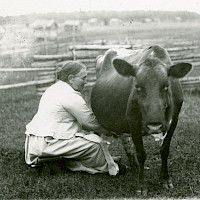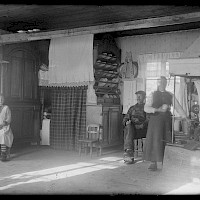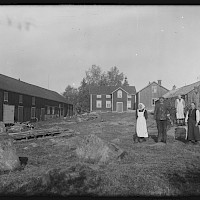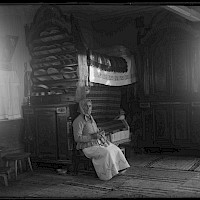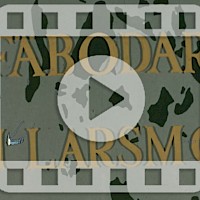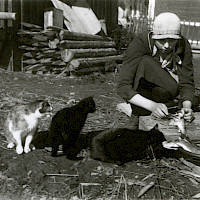
At home
Families in the archipelago usually lived in small cottages made up of two rooms: a larger room and a smaller chamber. The larger room was a true multipurpose space: it served as the kitchen, parlour, workroom and sometimes even a bedroom. The smaller chamber was used as a bedroom. The nuclear family consisted of the parents, several children and sometimes also the maternal or paternal grandparents. This meant that quite a number of people had to share rather small living quarters. There were other buildings on the farm as well: a cowshed, a sheep-house, horse stables (if the family owned a horse), a boat-house and a number of sheds where foodstuff for the family as well as animal feed were stored.
Life at the farmUp until the late 1800's, families in the archipelago were almost entirely self-sufficient. Farming, hunting and fishing brought food to the table, and everything the family needed was made at home. The family might have a cow, a few sheep, perhaps a pig and a few chickens. Filbunke – fermented, pudding-like milk – butter and cheese were all made from cow's milk. Wool from the sheep was used to spin yarn and knit warm clothes. The sheep were also kept for their meat. The pig was slaughtered in the autumn, providing the family with meat for the Christmas holidays. The staple diet consisted mainly of herring, potatoes and porridge. Fish and sealskins were sold and the money was used to buy necessities that the family could not produce themselves, such as coffee, sugar, iron pots and cotton cloth.
Household work – preparing meals, laundry work, repairing clothes – was usually the mistress' domain. She also tended to the cow and the sheep. The master made utility articles (often of wood), repaired the fishing nets and maintained the farm buildings. The horse was also the master's responsibility, but not all families had a horse. The children were expected to do chores and help around the house from an early age.


